Taiwan Flag Meaning
A red field with a blue canton containing a white twelve-pointed sun, representing the Republic of China flag adopted in 1928, symbolizing the Three Principles of the People (nationalism, democracy, livelihood), the twelve traditional Chinese hours, and the aspiration for progress and development.
- Continent
- Asia
- Adopted
- 1928
- Ratio
- 2:3
- Colors
- red, white, blue
- Designer
- Lu Haodong and Sun Yat-sen

Symbolism
Red Field: Represents the blood and sacrifice of the martyrs who died for the revolution and the founding of the Republic of China, symbolizing the courage and determination of those who fought for democracy and freedom.
Blue Canton: Represents the blue sky and the infinite possibilities of the future, symbolizing liberty, justice, and the democratic ideals that guide the Republic of China's governance and development.
White Sun: Represents equality and fraternity among all people, with the twelve points symbolizing the twelve traditional Chinese hours and the progress of time, representing continuous advancement and modernization.
Three Principles of the People: The three colors represent Sun Yat-sen's Three Principles: blue for nationalism (minzu), white for democracy (minquan), and red for people's livelihood (minsheng), the foundation of ROC governance.
Twelve Points: The twelve points of the sun represent the twelve traditional Chinese double-hours and symbolize the spirit of progress, with each point representing the ongoing effort toward national development and prosperity.
History
- Pre-1600: Indigenous Austronesian peoples inhabited Taiwan for thousands of years, developing diverse cultures and languages across the mountainous island before any significant outside contact.
- 1624-1662: Dutch and Spanish colonial settlements were established on different parts of the island, introducing European administration and Christianity while trading with both indigenous peoples and Chinese immigrants.
- 1662-1683: The Ming loyalist Zheng family ruled Taiwan as the Kingdom of Tungning, using it as a base to resist Qing rule on the mainland until eventual surrender.
- 1683-1895: Qing dynasty rule brought large-scale Chinese immigration, agricultural development, and gradual integration into the Chinese imperial system, though indigenous resistance continued.
- 1895-1945: Japanese colonial rule modernized Taiwan's infrastructure, education, and economy while implementing policies of cultural assimilation and exploiting the island's agricultural and industrial potential.
- October 25, 1945: Taiwan was returned to Republic of China control after Japan's surrender, ending 50 years of colonial rule, though tensions soon developed between mainlanders and local Taiwanese.
- February 28, 1947: The 228 Incident saw violent suppression of Taiwanese protests against ROC governance, killing thousands and beginning decades of authoritarian martial law rule.
- 1949: The ROC government retreated to Taiwan after losing the Chinese Civil War to the Communists, bringing about 2 million mainland Chinese refugees and establishing rival claims to represent China.
- 1949-1987: Martial law under Chiang Kai-shek and Chiang Ching-kuo brought authoritarian rule, rapid economic development, and the 'Taiwan Miracle' of industrialization and democratization preparation.
- July 15, 1987: Martial law was lifted, beginning Taiwan's democratic transition with political liberalization, opposition parties, and eventual direct presidential elections.
- 1996-Present: Direct presidential elections established Taiwan as a vibrant democracy, while maintaining complex relationships with China and the international community regarding sovereignty and recognition.
Trivia
- Taiwan is a global leader in semiconductor manufacturing, producing over 60% of the world's computer chips through companies like TSMC, making it crucial to global technology supply chains.
- The flag represents a vibrant democracy that has achieved remarkable economic development, transforming from an agricultural society to a high-tech economy in just decades.
- Traditional Chinese characters are still used in Taiwan, along with Mandarin Chinese as the official language, while Taiwanese Hokkien and indigenous languages are also spoken.
- Taiwan has universal healthcare and one of the world's most advanced digital governments, with comprehensive online services and digital innovation throughout society.
- The island is located in a seismically active region and faces frequent earthquakes and typhoons, leading to advanced disaster preparedness and resilient infrastructure design.
- Taiwan's night markets are famous worldwide, featuring diverse street foods, snacks, and local specialties that reflect the island's multicultural culinary heritage.
- The country has made significant contributions to global technology, including innovations in computers, smartphones, LCD displays, and artificial intelligence applications.
- Taiwan maintains diplomatic relations with 13 countries while having informal relationships with major powers, reflecting its complex international status.
- Traditional festivals include Chinese New Year, Dragon Boat Festival, and Mid-Autumn Festival, celebrated alongside modern holidays and local indigenous celebrations.
- The flag flies over a country with remarkable biodiversity despite its small size, including endemic species found nowhere else due to its island geography and varied elevation.
- Taiwan has a thriving democracy with regular elections, free press, and civil liberties, consistently ranking among the freest societies in Asia.
- The economy is heavily trade-dependent, with electronics and machinery being major exports, while domestic consumption and services sectors continue growing.
- Traditional arts include Chinese calligraphy, opera, and crafts, while contemporary culture includes vibrant pop music, film, and digital entertainment industries.
- Taiwan faces unique challenges related to its international status, cross-strait relations with mainland China, and balancing economic integration with political autonomy.
- Environmental protection has become increasingly important, with renewable energy development, conservation efforts, and sustainable development initiatives throughout the island.
Related Countries

Philippines
Asia
A horizontal bicolor of blue over red with a white equilateral triangle at the hoist, containing a golden sun and three golden stars. The Philippine flag is unique in that it is inverted in wartime, with the red field displayed on top.
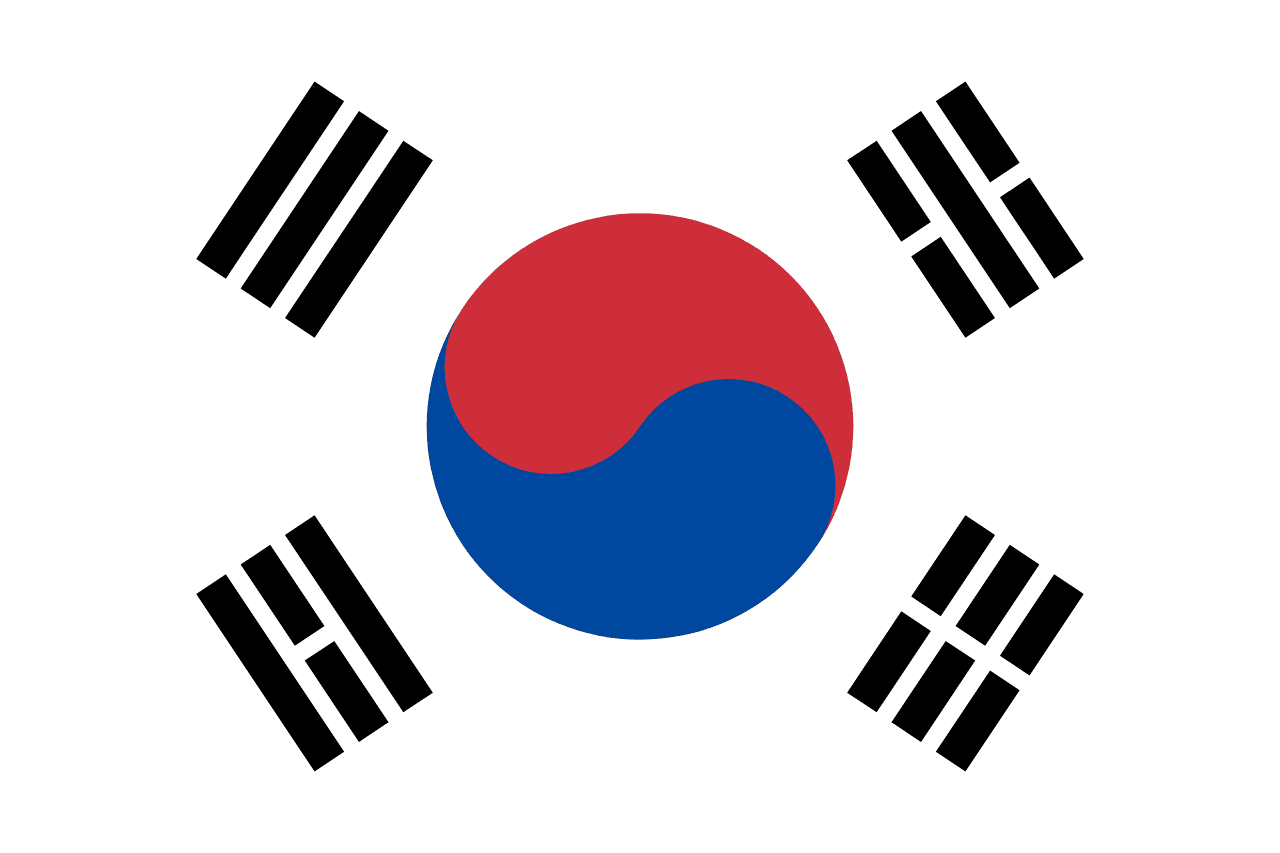
South Korea
Asia
A white field with a red and blue taegeuk (yin-yang symbol) in the center surrounded by four black trigrams from the I Ching, representing the harmony of opposites, the balance of natural forces, and the philosophical foundations of Korean civilization dating back thousands of years.
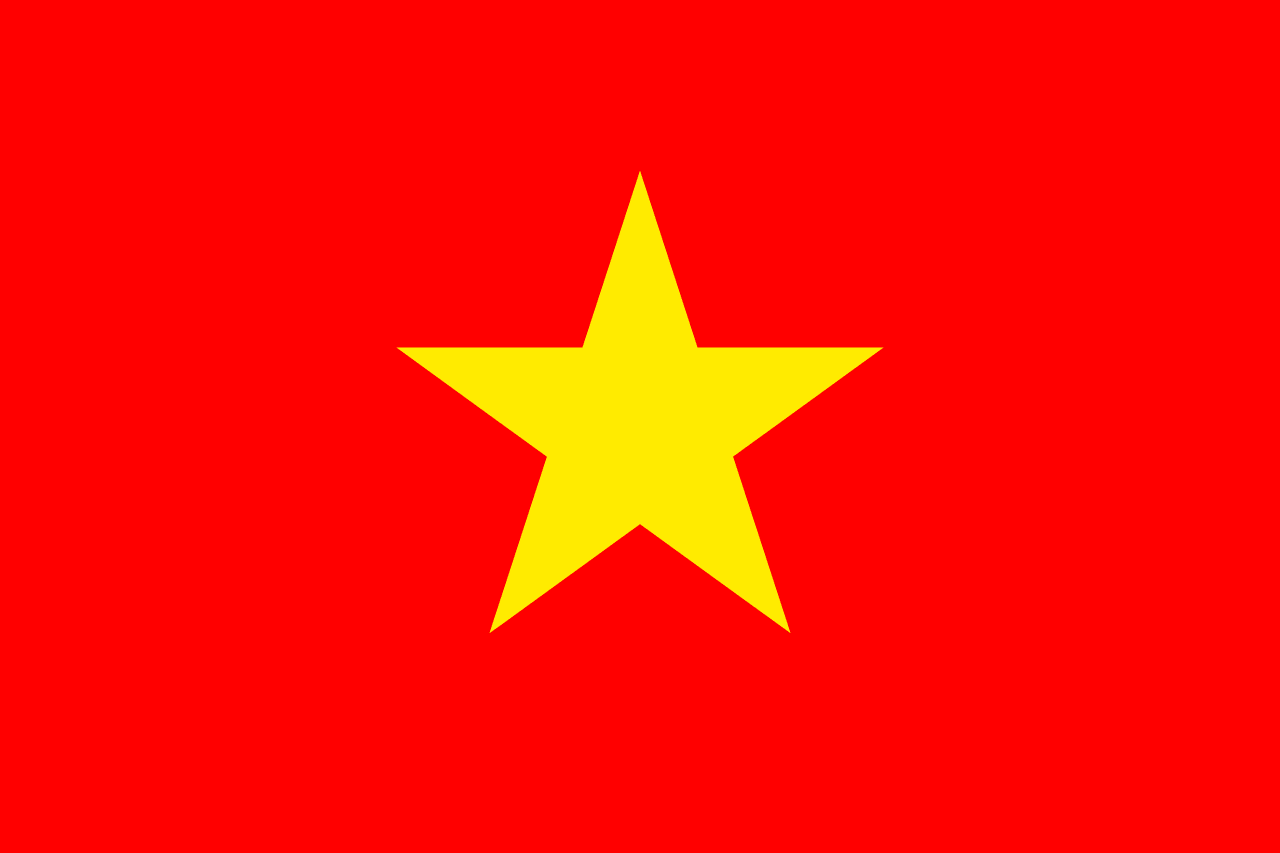
Vietnam
Asia
A red field with a large yellow five-pointed star in the center, representing the blood shed for independence and the unity of workers, peasants, intellectuals, youth, and soldiers under Communist Party leadership in the struggle for national liberation and socialist construction.
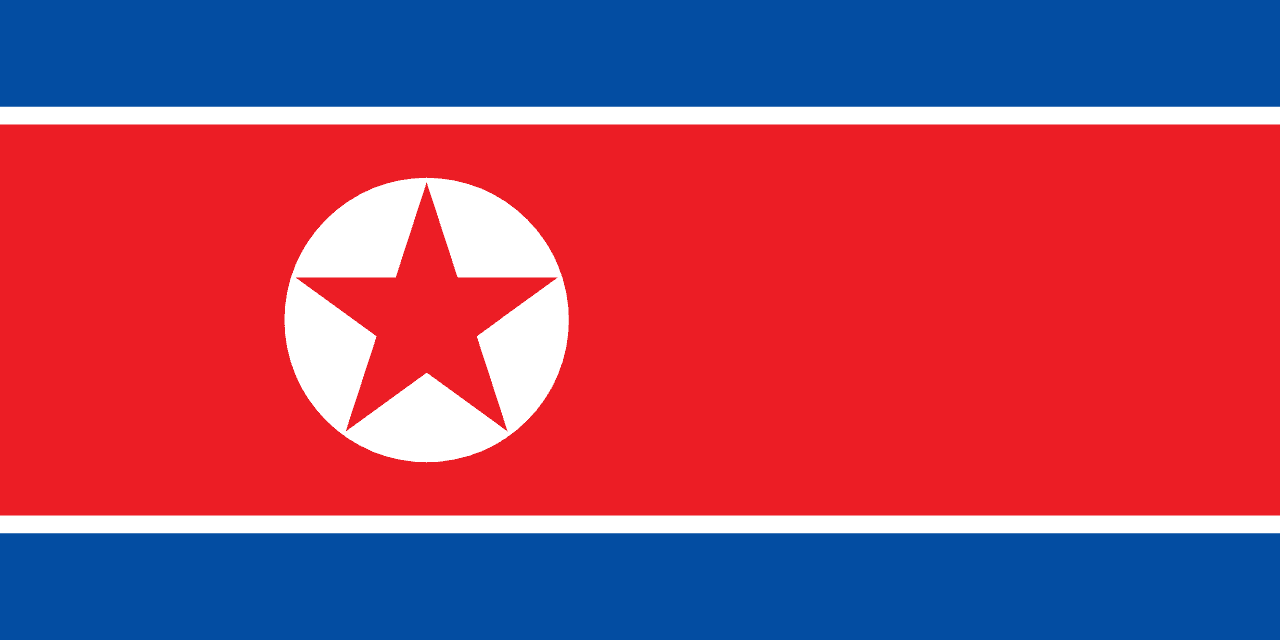
North Korea
Asia
The flag of North Korea, adopted in 1948, combines red, white, and blue with a central red star. Its design reflects socialist symbolism while incorporating elements rooted in Korean identity. For the state, it represents revolution, unity, and loyalty, while for observers it has become one of the most recognizable emblems of the modern Korean peninsula.
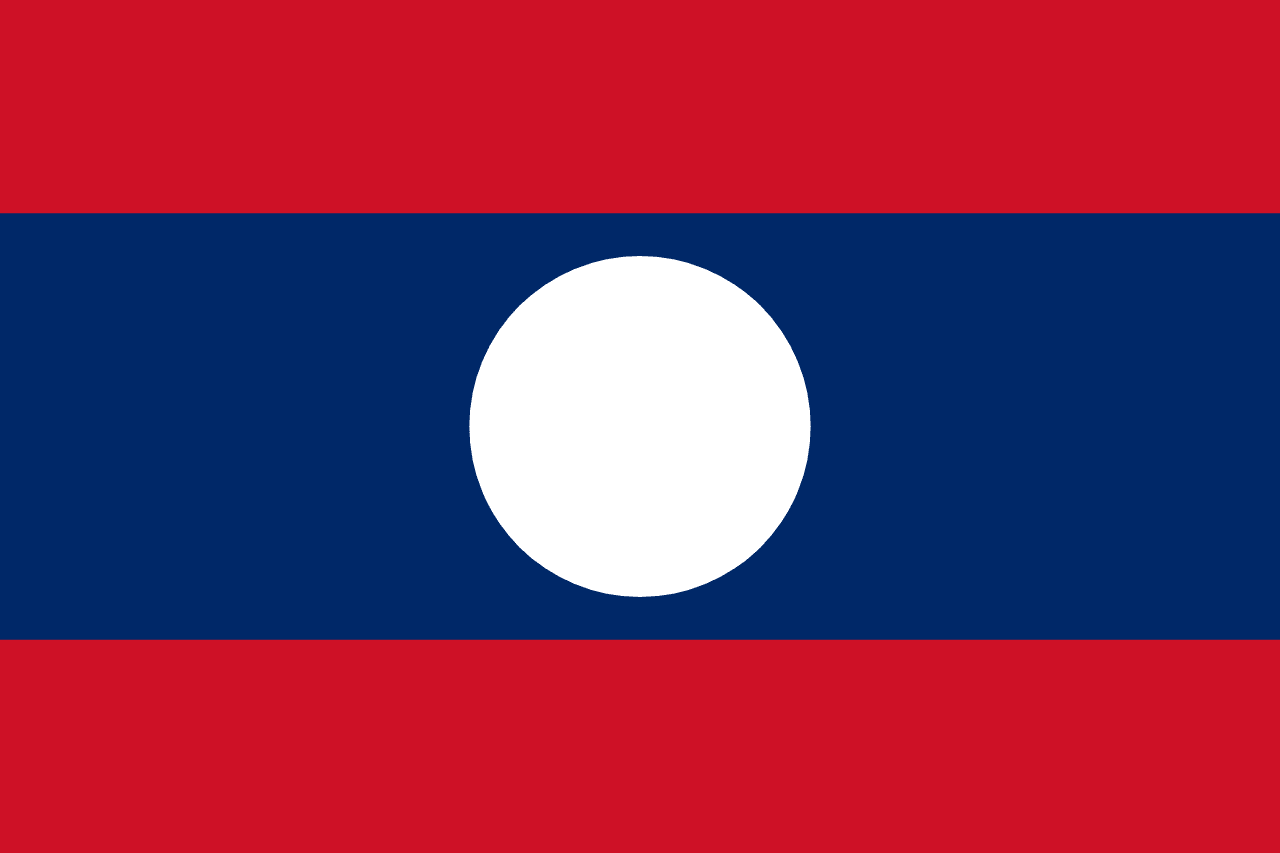
Laos
Asia
Three horizontal stripes of red, blue, and red with a white circle centered on the blue stripe, representing the blood of independence, the Mekong River, and the full moon reflecting unity of the Lao people.
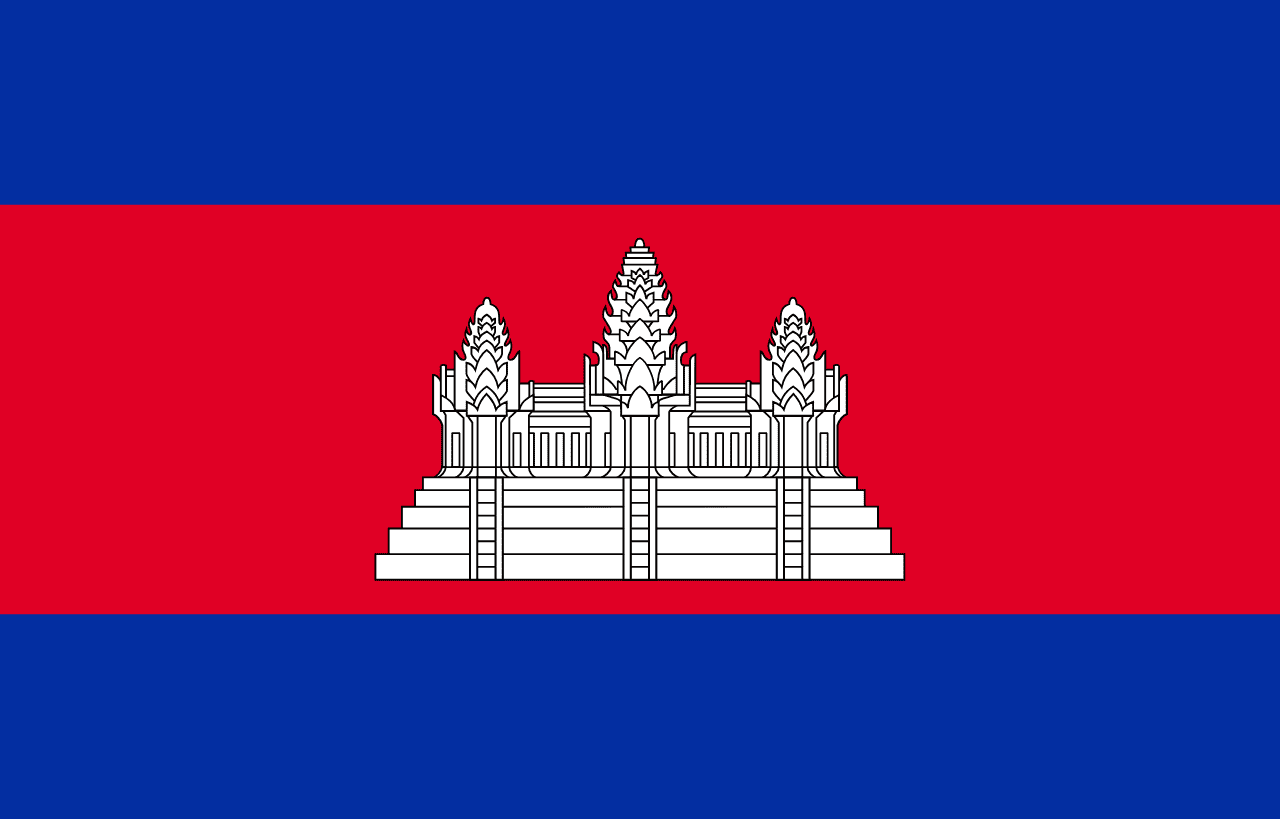
Cambodia
Asia
Three horizontal stripes of blue, red (double width), and blue with a white depiction of Angkor Wat temple in the center, representing the nation, the king, and the sacred temple that symbolizes Cambodia's glorious past and cultural heritage.